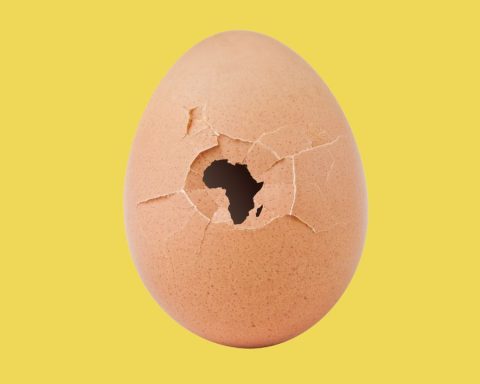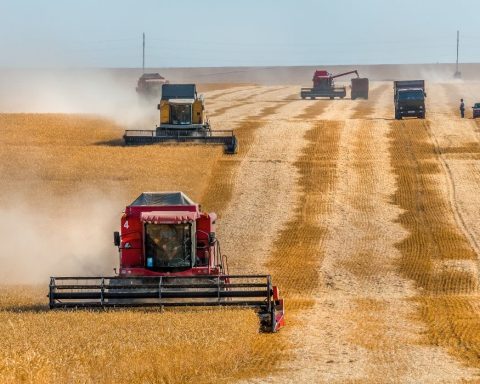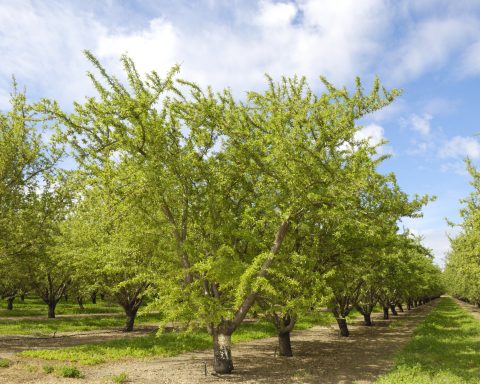When Julia Stamberger, CEO of the Planting Hope Company and mother of four, decided to fill the American plant-based food company’s entire board and C-suite with only women, her reasons were pretty straightforward. She says that not only did the approach give her access to an abundance of untapped talent, but more importantly, it gave the company greater insight into its main customers.
“Our core customer that’s bringing in the innovation, that’s adopting the new products, that’s buying our stuff and feeding it to their families or telling their friends about it, it’s a woman,” says Stamberger, pointing to studies that show women drive up to 80% of consumer purchases.
The CEO with two decades of experience in the snack industry launched Planting Hope in 2020, banking on the growing popularity of plant-based products. A year later the company went public and it broke into the booming alternative milk sector with its Hope and Sesame line of milks and creamers. It was soon awarded the title of Best Novel Creamer of 2022 by Good Housekeeping.
Stamberger says she was drawn to sesame seeds as a source for plant-based milk when she spotted a gap in the market – a lack of products that brought together both nutrition and sustainability. “Almond milk is effectively flavoured water,” she says. She notes that while dairy milk “has its issues,” including allergen concerns and sustainability and animal welfare challenges, it’s nonetheless “extraordinarily nutritious – and [when consumers] replace it with almond milk … they lose that nutrition.”
In an effort to seek out something new and innovative that could fill that gap, Stamberger and her team landed on sesame milk. According to the Hope and Sesame website, its sesame milk contains close to the same amount of protein as dairy, eight times more protein than most almond milks and two to three times more protein than most oat milks. And Hope and Sesame’s unsweetened product contains zero grams of sugar compared to 12 grams in cow’s milk.
While there are a few sesame milks already available in Asia, Hope and Sesame is the only brand currently being sold to scale in North America. Stamberger says the sustainable, unsweetened, shelf-stable product is ready to take on its biggest competitors.
Though oat milk has become increasingly popular among North American consumers, almond milk remains the top seller in the U.S., despite the enormous amounts of water needed to produce it. For Stamberger, growing concerns over the sustainability of almond farming created an opportunity. Sesame milk requires 95% less water to be produced than almond milk and 75% less water than oat milk, according to a 2019 report by ProVeg International. (The company plans to quantify the sustainability impact of its Hope and Sesame products by partnering with Planet FWD this year to conduct a life-cycle analysis.)
Sesame seeds are grown in a variety of arid regions around the world, including South America and Sub-Saharan Africa, where most of Hope and Sesame’s seeds come from. Sourcing its base product from tens of thousands of kilometres away may put Hope and Sesame’s carbon footprint at a disadvantage compared to other plant-based milk producers that are able to source ingredients such as oats more locally. However, sesame seeds come with other sustainability advantages, including being considered naturally pest- and drought-resistant, as well as being a soil-enhancing cover crop.
Stamberger notes that the company’s supplier has not been able to identify a valid fair-trade certification for sesame, a crop, she adds, that “stunningly doesn’t even have an industry association.” But, she explains, “our sesame ingredient supplier has established comprehensive fair labour practices for themselves and their agricultural product providers.”
Although people have grown sesame seeds for at least 4,000 years, Stamberger calls it an “overlooked crop" in the plant-based milk space. She says that’s likely because working with the seed is difficult. “It took five years of research and development and seven figures of investment to get to a commercially viable product,” she says, noting that nailing down an extraction method that can boost the product’s shelf stability is one of the greatest challenges.
Sesame oil has long been the main commercial output for the seed, Stamberger explains, leaving the pulp or cake to be thrown away or used as animal feed. Today, Hope and Sesame uses that by-product to make milk, becoming the “first plant milk worldwide to earn the Upcycled Certified™ mark,” according to a statement released earlier this month.
David Julian McClements, a professor of food science at the University of Massachusetts, says it is critical for plant-based milk products to be both healthy and sustainable. “There are appreciable differences in the healthiness and sustainability profiles of different plant-based milk products … sesame milk has a higher protein content than other types of plant-based milks, which would be an advantage.”
Our core customer that’s bringing in the innovation, that’s adopting the new products, that’s buying our stuff and feeding it to their families or telling their friends about it, it’s a woman.
Julia Stamberger, CEO of the Planting Hope Company
Sesame seeds are also a natural source of calcium, providing four times as much as soy and three and a half times as much as almonds. Hope and Sesame contains both natural and fortified calcium, coming in at 390 milligrams of calcium per cup for its regular products, which should give it a leg up in a market looking for calcium-rich products. Dairy milk contains around 300 milligrams of calcium per cup.
Stamberger notes that an additional two years of development went into ensuring Hope and Sesame’s Barista Blend could stand up to high-acid coffees and varying temperatures. “It can still do what it’s supposed to do in terms of frothing, foaming, steaming and combining without curdling.”
Sydney Olson, a food and drink analyst for market research firm Mintel, explains that while none of the major non-dairy types currently perform as well as dairy milk “in important purchase-driving perceptions related to taste, health and cooking/additive usage,” the “other non-dairy milk” segment, which includes sesame, hemp and macadamia, was, along with oat, the only segment to see sales growth in 2022.
“This suggests that a portion of consumers are still on the search for a base type that checks all the boxes,” she says. “If sesame milk can prove superiority to existing offerings in taste, nutrition and sustainability, and do so at a lower price, the base type certainly has potential to be a strong player.”
Noah Hyams, the founder of Vegpreneur, forecasts that there is room for sesame milk in the brimming plant milk market. “While the sale of almond milk is still leading in the U.S., the rise in popularity of oat milk is paving the way for even more plant milks to go mainstream,” he explains. “Since the data shows us that most U.S. households buy two or more types of non-dairy milk, it’s not too far out to believe that new plant milks, such as sesame milk, might carve out a significant niche for themselves in customers’ hearts and shopping carts.”
While Planting Hope Co. does not currently report sales broken down by product line, Stamberger notes that “thus far, sales and distribution are meeting/exceeding expectations” since the sesame products were launched in the second quarter of 2022.
Stamberger’s hope is that “once a household adopts them, they’re on the core shopping list forever.”





